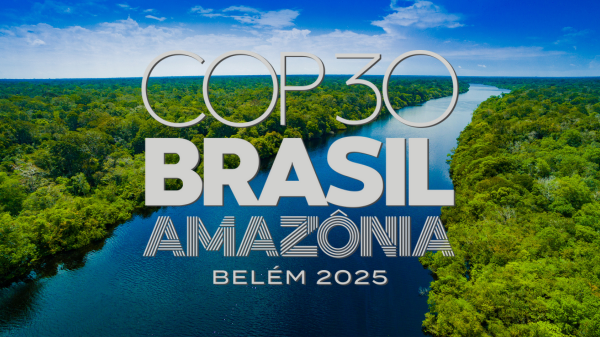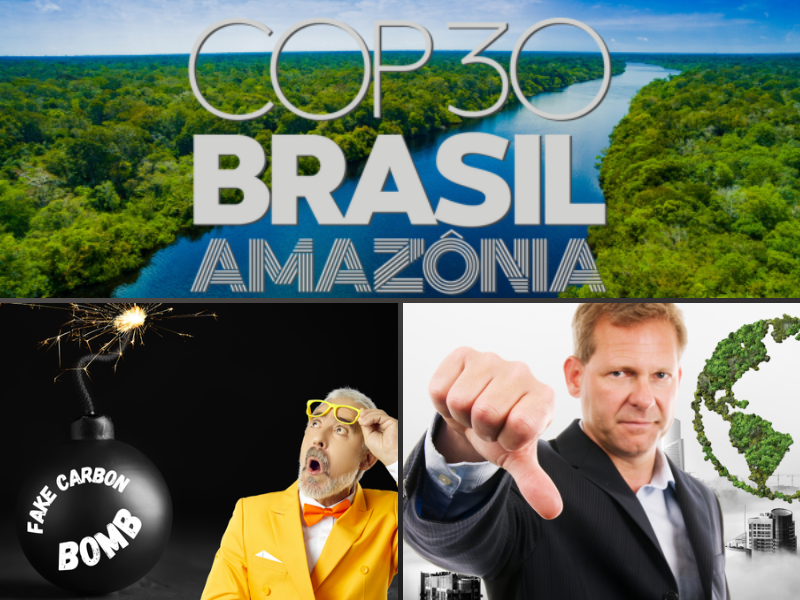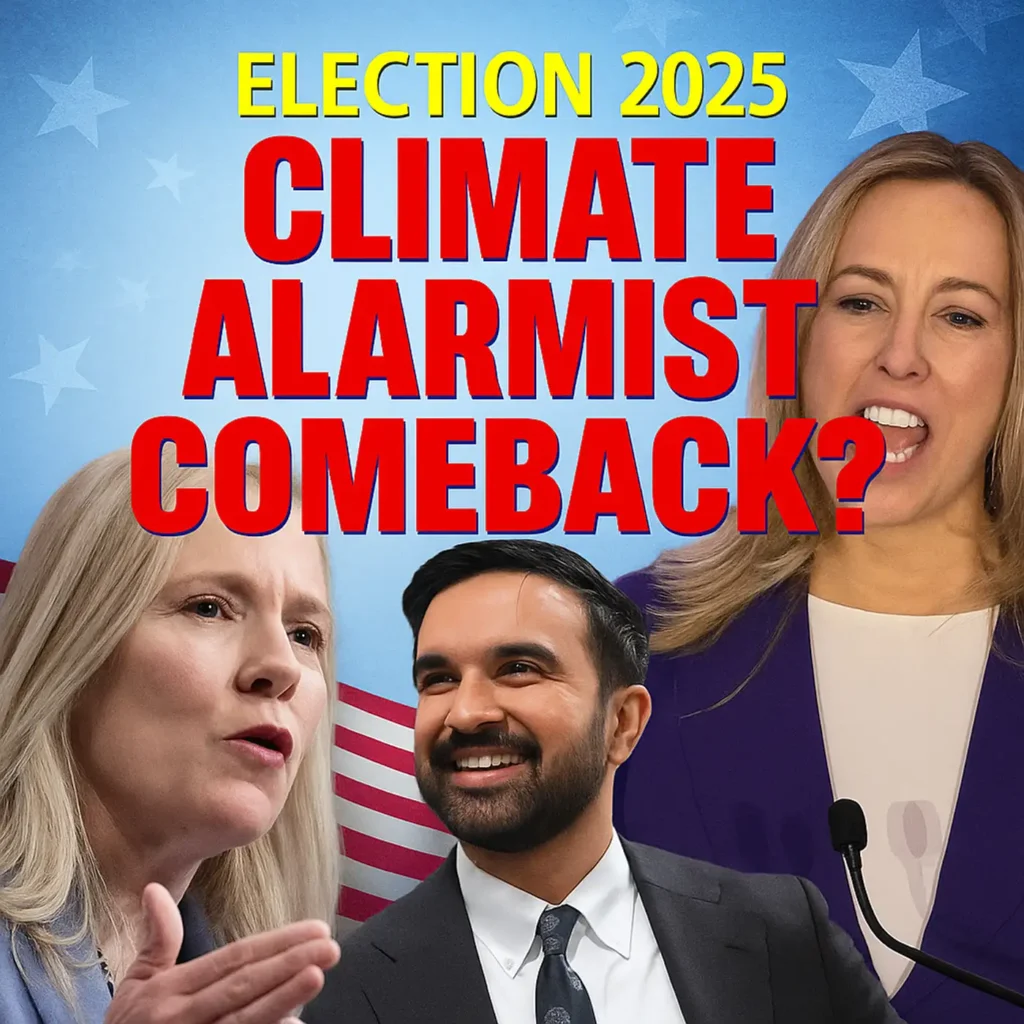IN THIS ISSUE:
- Global Politics Issue: Climate Goals Fade
- ‘Carbon Bomb’ Projects Mean Continued Rise in Emissions, with Big-Bank Funding
- Hundreds of Companies Ditch Another Global Climate Initiative

Global Politics Issue: Climate Goals Fade
The title of this essay might be a bit misleading at first. Countries keep setting ever-more stringent emission reduction and higher financing targets at every UN Conference of the Parties (COP) to the Framework Convention on Climate Change. It’s that the goals and promises are now, as they have always been, pipedreams: promissory notes backed by no true assets or penalties for failure. They have always failed since the first climate agreement way back at the first Earth Summit, also in Brazil, so we’ve come full circle.
In Brazil, participating countries agreed to “stabilize or peak their greenhouse gas emissions” at 1990 levels, by 2000. That goal still has not been met, and several agreements and more-stringent targets later, none of the targets for emissions reductions or financing for climate adaptation or reparations have ever been met. I see no reason to believe any agreements signed at COP 30 will meet a different fate, anything other than failure.
The history of climate agreements is of lofty (ultimately politically and possibly physically unattainable) goals being set, when in fact the parties setting the goals knew or should have known they would not make the sacrifices necessary to cut emissions by their agreed-upon amounts. Europe has probably come the closest, and its energy and food prices, unemployment, deindustrialization, and political turmoil reflect it. In Europe, most governments that made strict commitments have been replaced by governments more concerned about energy and food prices and national interests, have seen the rise of political parties opposed to and hampering stricter commitments, or have themselves altered plans that would have called for more sacrifice, in order to stay in power.
On the ground, as opposed to the negotiating table, Australia, China, and various other countries are all expanding their fossil fuel use—building mines and power plants with useful lives extending to 2050 and beyond—even as they tout their continued public commitment to net zero or, in China’s case, some effort to peak and reduce emissions, as I’ve discussed in Climate Change Weekly in recent weeks and months.
Now we are at COP 30. The conference is being held in a country and city ill-suited to lead on climate change. Brazil mowed down thousands of acres of pristine rainforests, amounting to hundreds of thousands of lost trees, to build concrete highways (and increase CO2 emissions) to get attendees to the location. In addition, the plates of the participants are daily overflowing with Brazilian beef and other meats while those same COP delegates preach to the unwashed masses that meat eating is not just murder, it is murdering the planet, so they should eat veggies, grains, and bugs.
A leader among the conference’s prominent attendees let the dirty secret out of the bag, admitting the consensus on the importance of fighting climate change is waning.
“UK Prime Minister Sir Keir Starmer acknowledged the waning political support on climate change,” reported the BBC. “He said it had been a unity issue internationally and in the UK but ‘today sadly that consensus is gone.’
“Over the next two weeks countries will try and negotiate a new deal on climate change, with a particular focus on channeling more money to forest protection,” the BBC continued.
The final clause of that sentence would be funny if it weren’t so sad. Those talking about forest protection cut down vast swaths of rainforest to hold the conference. And the discussions are being led by countries that incentivize the destruction of forests to power supposedly sustainable lumber and wood pellet-fired power plants and the destruction of biodiverse rainforests for palm plantations, to satisfy their desire for “green” biofuel in the form of palm oil. As is all too common, the biggest sinners are the ones pointing their fingers at others.
All this being said, if the evidence wasn’t clear before the conference, machinations and negotiations leading up to the event made it plain the climate crisis emperor is truly naked and increasingly bereft of supporters.
The 2015 Paris climate agreement and subsequent agreements required countries to provide detailed plans for how they would catch up and meet the emission reduction commitments they missed, as well as submitting even more stringent goals to be met by dates certain in the future. The parties to Paris agreed to provide these plans by February 10, 2025, yet only approximately 15 countries submitted updated commitments by the initial deadline. That forced the UN grand poohbahs of the climate con to embarrassingly extend the deadline to September. September came and went, and still only about a third of the countries involved in the agreement submitted their new plans (69 of 197). Worse still, the evidence suggests even for countries that have submitted their updated commitments, their new plans are not that impressive.
Japan, along with the EU, has been a leader in the fight for binding emission reductions, yet as the Center for International Law describes Japan’s new commitments,
Japan has, so far, put forward the weakest national plan, without a single timeline or target to reduce fossil fuel production or increase renewable energy. What’s more, between 2013 and 2024, Japan provided around $93 billion for overseas oil and gas projects. This includes $1.2 billion for the Tangguh LNG 3 project in Indonesia, which furthers the country’s fossil fuel dependency and greatly impacts indigenous communities.
The good old EU was late to the party with a plan produced in after-midnight negotiations. The plan the EU finalized just days before COP 30 commenced has almost universally been described in the mainstream media as “watered down” or “weakened.” In a multinational union that is supposed to thrive on consensus, nearly a fifth of the members either rejected the agreement or abstained during the vote for its adoption, despite compromises intended to garner universal support.
Under the EU’s new nationally determined contribution plan, the union as a whole is committed to slash emissions by between 66.25 percent and 72.5 percent below 1990 levels by 2035 and by 90 percent by 2040—steep, but still a far cry from net zero.
Even then, the devil is in the details. The EU’s new plan allows countries to count carbon credits bought on the open market internationally as meeting 5 percent of their required reductions. In addition, the EU ministers agreed to consider allowing an extra 5 percent of the 2040 emissions target to be made up with credits in future, meaning the actual reduction would be just 80 percent below 1990 levels. The plan also allowed flexibility and the possibility of renegotiated targets depending on economic performance, and it postponed a new carbon trading plan covering transport and heating. Perhaps someone should tell the EU ministers that when you exempt entire sectors of the economy from overall reduction goals, steeper reductions will be required from nonexempt industries.
In the end, COP 30 will be a tale told before, of noble words spoken, high ambitions set (though not nearly as high as some hoped), a negotiated agreement complete with new targets and commitments for funding, only to have all of it fail to be matched by what will finally be accomplished. In the coming years, as has been true in the past, deadlines will pass by, emission reductions will fall short (if any reductions occur at all), minimal funding will materialize, and even less of the funding actually delivered will find its way to the people it is supposed to help as billions of dollars go unaccounted for, somehow lost in the climate cabal bureaucracy, siphoned off by corrupt governments, or landing in the pockets of profiteering, politically connected global elites.
Sources: Politico; PBS; Center for International Environmental Law; BBC

‘Carbon Bomb’ Projects Mean Continued Rise in Emissions, with Big-Bank Funding
A story from Al Jazeera reports that since 2021, 28 new individual projects that are expected to emit more than 1 billion tons of carbon dioxide over the life of their operations have been opened, with the help of big banks. Such projects—oil, gas, and coal facilities or fields—have been referred to as “carbon bombs” since a 2022 research article describing such facilities or projects was published.
The report Al Jazeera relied on for its story says 365 such projects are currently in operation across the globe. The report identified an additional 2,300 smaller fossil fuel projects “approved or launched since 2021, whose potential emissions exceed five million tonnes of CO2 each, equivalent to the annual emissions of a city like Paris.” In a breakdown by country, China alone accounted for nearly half the world’s carbon bombs, at 43 percent, with Russia and the United States accounting for 9 percent and 5 percent, respectively.
The emissions from all the projects combined will be 11 times greater than the amount of emissions reductions necessary to meet the Paris Agreement’s target of preventing global average temperatures from rising by 1.5℃ above preindustrial levels, according to the authors’ calculations.
Interestingly, the researchers found that between 2021 and 2024 the world’s 65 largest banks provided more than $1.6 trillion in funding to the corporations developing the new “carbon bomb” projects. Many of these multinational banks and international, multilateral lending institutions had previously committed to stop funding oil, gas, and especially coal projects. Al Jazeera reports,
Barclays Bank is the most involved in supporting companies behind carbon bombs, providing $33.7bn to 62 companies, including Eni, ExxonMobil and TotalEnergies.
“Major global banks are exacerbating climate change and future emissions by continuing to give carte blanche to these fossil fuel companies that are destroying the planet,” said Louis-Maxence Delaporte, energy research manager at Reclaim Finance, one of the NGOs involved in the study.
Source: Al Jazeera

Hundreds of Companies Ditch Another Global Climate Initiative
It seems yet another multilateral, UN-sanctioned business/climate action group is in sharp decline if not about to close up shop, as similar groups have done.
The Science Based Targets initiative (SBTi) was founded jointly by the Carbon Disclosure Project, the UN Global Compact, World Resources Institute, World Wide Fund for Nature (WWF), and We Mean Business Coalition, with funding from the IKEA Foundation, Amazon, the Bezos Earth Fund, the We Mean Business coalition, the Rockefeller Brothers Fund, and the UPS Foundation. Thousands of companies large and small had set or committed to set science-based carbon emission reductions validated by SBTi. The initiative has been shedding members at a rapid pace, with approximately 9 percent of its member companies dropping out by the third quarter of 2025.
By the end of 2023, SBTi included 4,205 companies and financial institutions, according to SBTi’s 2024 report. At that time, SBTi was experiencing large membership growth, especially in developing countries. Blackout News says that by 2025 more than 10,000 organizations were members, but I’ve been unable to verify that number and suspect it includes many climate NGOs and banks, investment houses, and multilateral development banks and companies counting their various subsidiaries in multiple countries as separate entities to pad the numbers. Regardless, whether 5,000 or 10,000, the number of participating organizations is now falling.
Some 893 companies have withdrawn from the SBTi in recent months, including several large international corporations.
SBTi’s report counted 465 companies in the United States, 693 in the United Kingdom, 2,010 in China, and 280 in Switzerland as having set science-based emission reduction targets to be verified by SBTi.
Since the beginning of 2025, however, 151 British, 129 U.S., 61 Chinese, and 12 Swiss companies have ended their commitments. The reasons given for withdrawal are business necessity. Blackout News writes,
[Companies] are prioritizing operational stability and profitability. Excessive regulations often lead to higher costs, stagnant investments, and declining competitiveness. The withdrawal is therefore seen as a strategic decision—a move away from symbolic politics and towards market-oriented action. …
[W]hen even leading industrial nations withdraw, it sends a clear signal: those who remain in restrictive climate alliances risk their competitiveness. Without adapting to economic realities, … companies face a structural disadvantage compared to more flexible markets.
SBTi is not the first anti-competitive, industrial/NGO/financial cabal to collapse in recent years. In the space of just a few weeks in late 2024, dozens of large international banks, investment houses, and portfolio management companies, accounting for more than $14 trillion in total assets, withdrew from the climate change coalition known as Climate Action 100+. The Net Zero Banking Alliance, a group consisting of 150 large banks, closed its doors shortly after President Donald Trump was reelected, when most of its largest founding banks in the United States, Canada, and the EU canceled their associations. At the time, regulators had begun to investigate many of the institutions for possible anticompetitive, antitrust activities.
It seems many major players in the private sector, like many politicians, are coming to recognize that peddling climate fears and deindustrialization via unreliable, expensive green energy mandates is a losing economic proposition, or at least they are a bad idea while Donald Trump is president, the winds having shifted within the political and economic dynamic they work within.
Source: Blackout News




